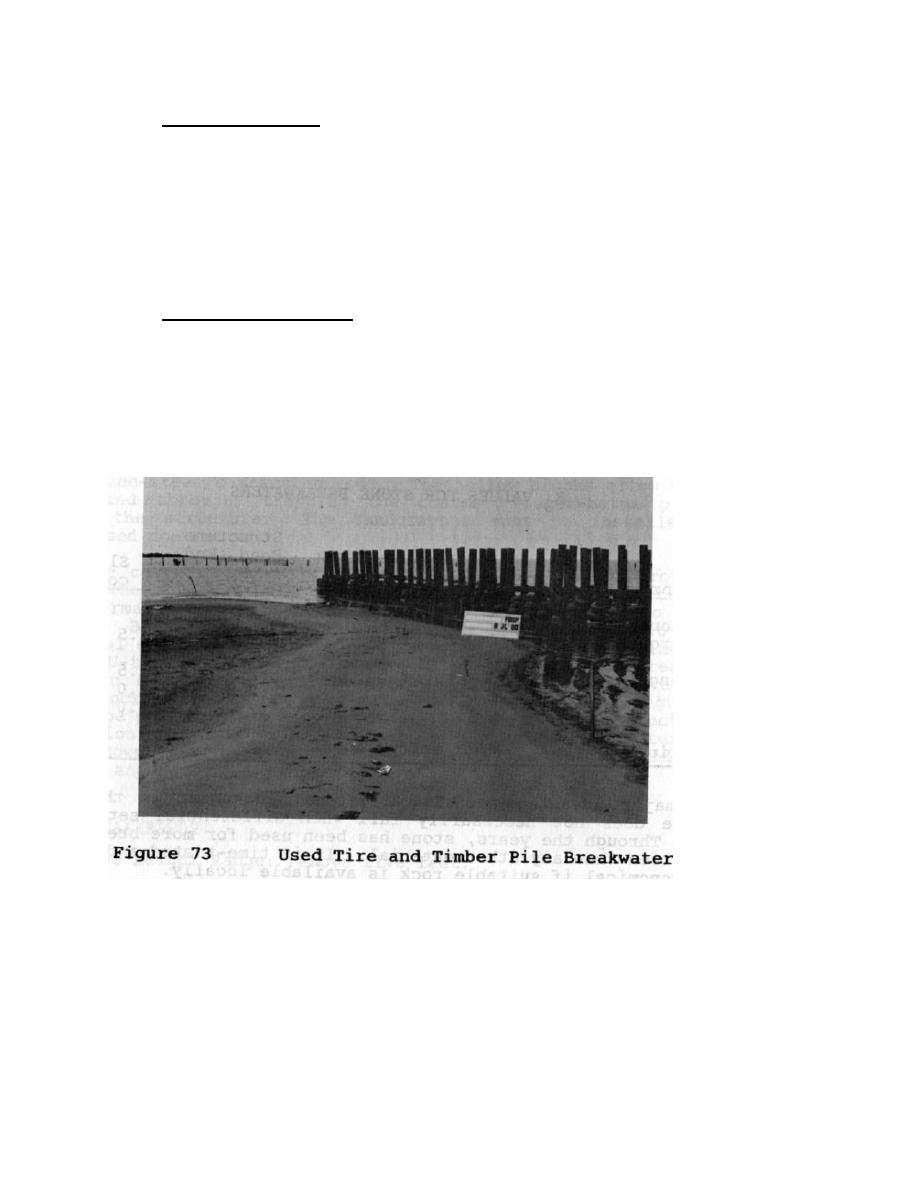
Timber Piles and Brush
Wave Height Range: Below two feet.
A brush breakwater is constructed of two parallel rows of posts driven into the offshore bottom,
connected across the top with timber crossties, and filled with brush. Brush should be cut longer than the
space between the posts and placed parallel to the structure alignment. Not suitable for permanent
protection, this breakwater can be used for temporary sheltering of young vegetation.
Used Tires and Timber Piles.
Wave Height Range: Below two feet.
Timber piles can be driven into the bottom, so that every three piles form a triangular pattern, and
used automobile tires can then be stacked on the piles. Just above the top tires, the triangularly grouped
piles should be interconnected using 2 x 6inch planks bolted to the piles (Figure 73). The structure,
whose stability depends on the depth of pile penetration, has proven effective against mild wave action.
GROINS
Important design considerations for groins include their height, length, spacing (if there are more
than one) and the littoral transport rate. Their height determines how much sand can pass over the
structure. Low groins, which essentially follow a foot or two above the natural beach profile, are widely
used because they stabilize the beach but do not trap excessive amounts of sand and thereby cause
downdrift damages. The groin length should not extend past the breaker zone or else it may force the
107



 Previous Page
Previous Page
